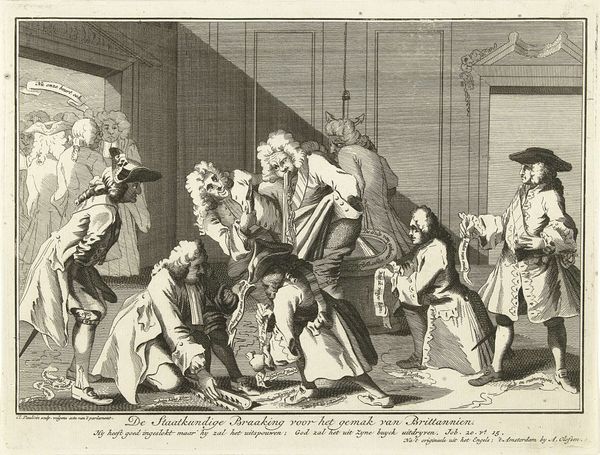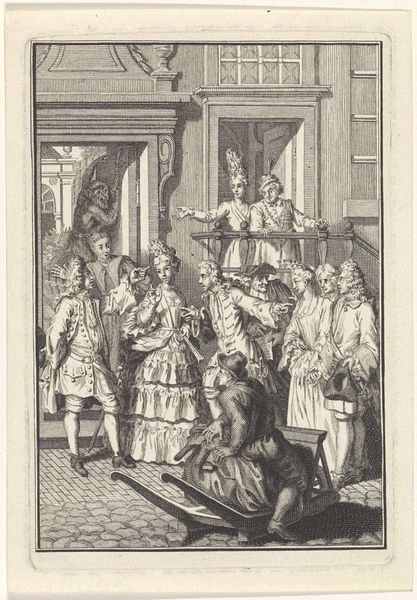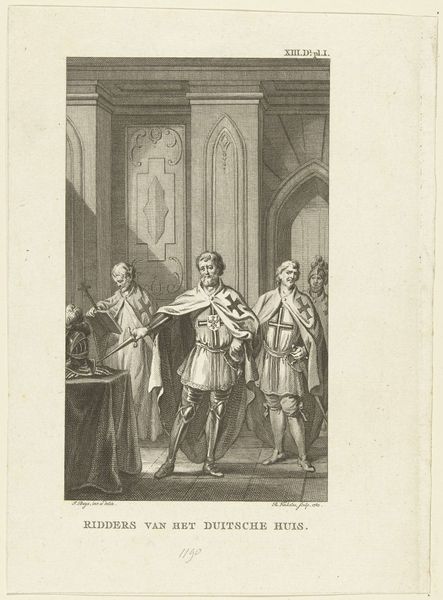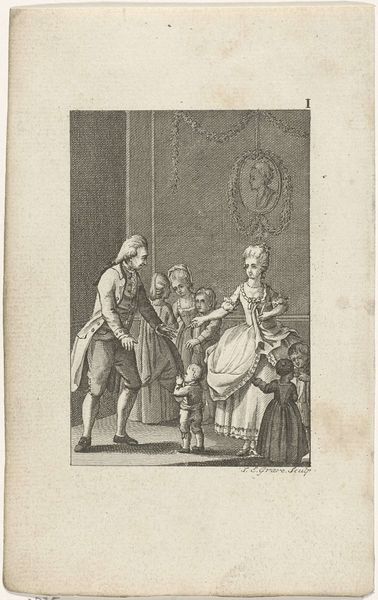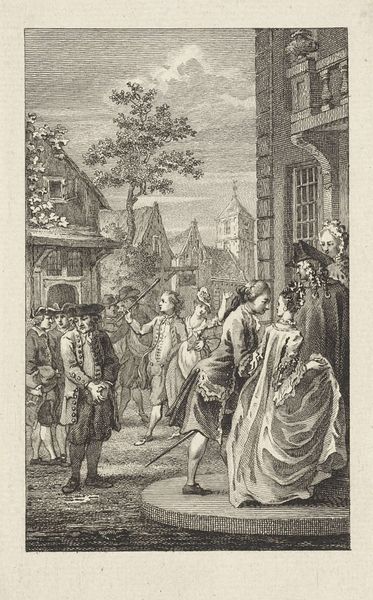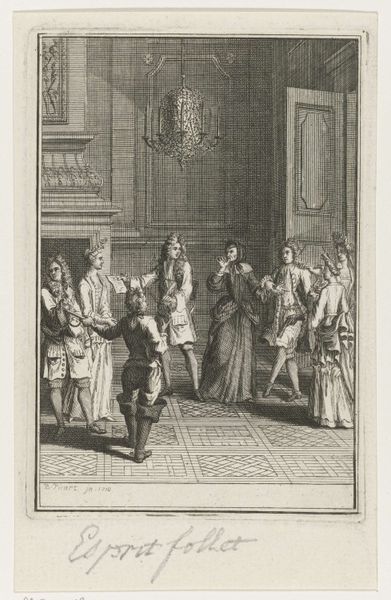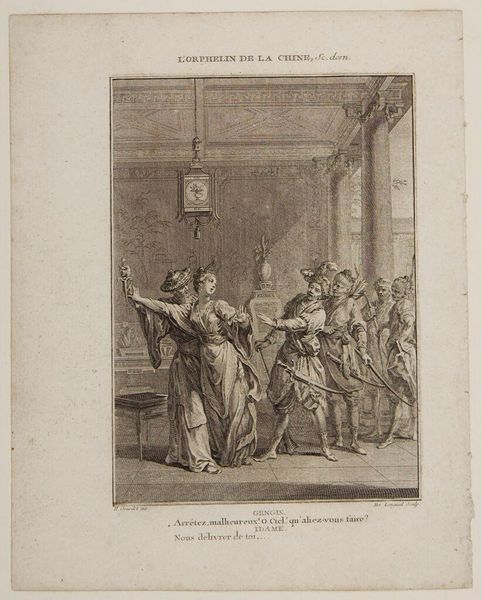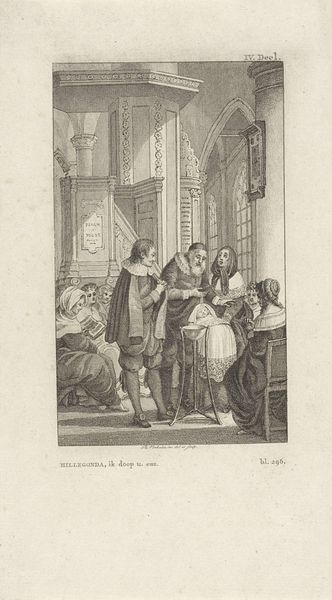
Dimensions: height 148 mm, width 94 mm
Copyright: Rijks Museum: Open Domain
Curator: Let’s discuss this engraving titled "Twee geknielde mannen op een kade," or "Two Kneeling Men on a Quay," crafted by Reinier Vinkeles in 1768 and housed at the Rijksmuseum. It really throws the rigid conventions of the baroque period into a kind of melodramatic performance. Editor: My first thought is of theater. The arrangement of figures—some kneeling, some observing—along with the architecture, evoke a theatrical set. Curator: Absolutely. Vinkeles, working during a period marked by social inequalities, uses this image to reflect on those disparities through symbolism. The men kneeling before what seem to be wealthier citizens represents a clear power dynamic. Editor: Indeed. The kneeling figures, with their supplicating gestures, bear echoes of religious iconography, perhaps intentionally subverting that power relationship. But instead of the holy interceding on behalf of the common person, we just have these well-dressed folks who don’t seem to be bothered. I find this interesting: that the central group is oblivious to the scene taking place. Curator: And how does the composition emphasize that lack of acknowledgement? What choices reinforce that narrative of social divide? Editor: Vinkeles organizes his players around clear axes: poverty kneeling on one side, privilege standing aloof on the other. This division underscores their disconnection but the whole image also strikes me as somewhat humorous and over the top. It’s baroque excess turned on its head in a sort of caricature. Curator: Yes, I find it intriguing to look at how the engraving’s narrative, initially seemingly a simple genre scene, can be unpacked to reveal insights into the socioeconomic landscapes of 18th-century society, questioning societal structures. It presents these social dynamics as both ridiculous and troubling, making one question these hierarchies that affect us to this day. Editor: This reminds us how visual symbols are powerful and the images themselves preserve cultural memory.
Comments
No comments
Be the first to comment and join the conversation on the ultimate creative platform.

